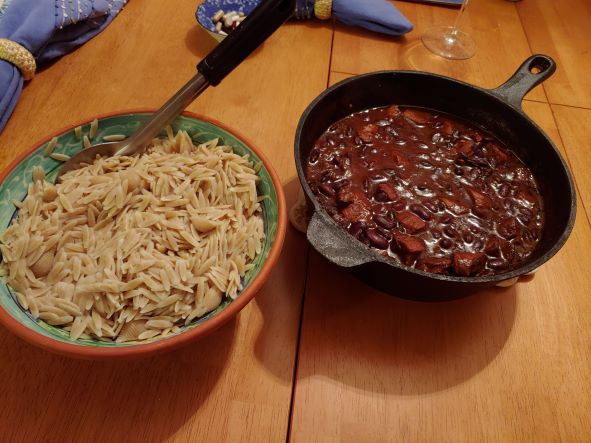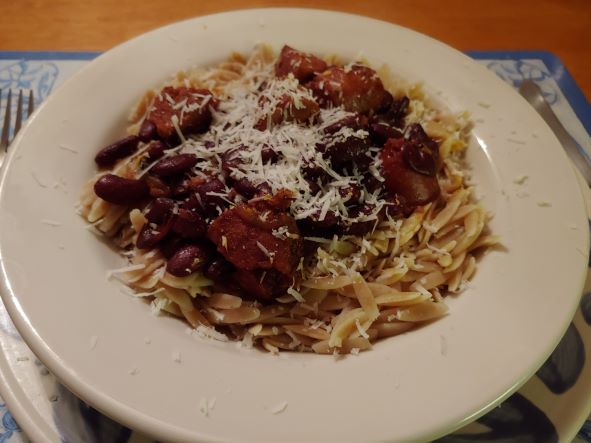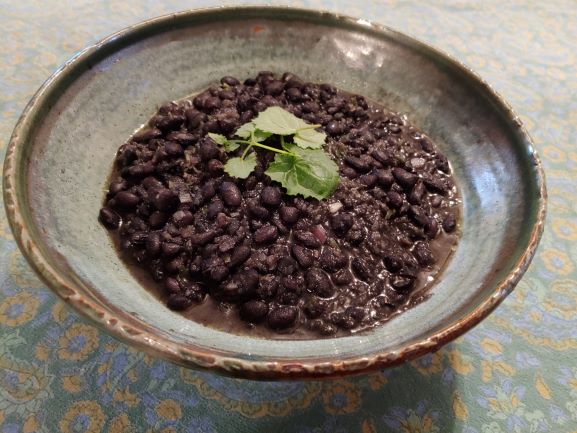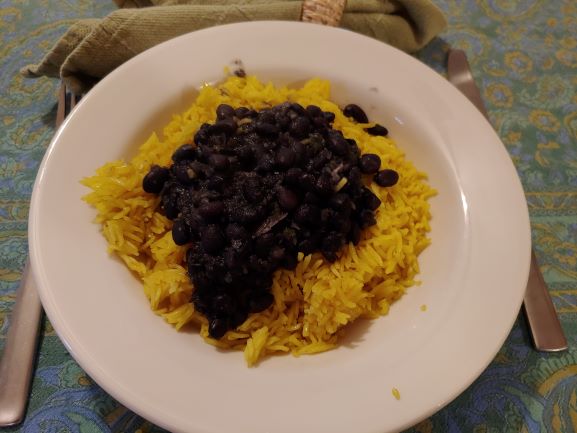This is another take on that famous Italian entry known as pasta fazool. In more renowned circle, it’s Pasta e Fagioli, or pasta with beans. In the post of 04/26/20 I gave my version of this classic dish. In my family, we prefer white kidney beans when we’re making this recipe. Still, we’re always experimenting and seeking to improve on it. And now we have another version: this time with red kidney beans and sausage. In this entry, the pasta base we’re using is orzo. That singular item that, to us, most resembles rice. And, yes, in past efforts we’ve used rice instead of pasta for this dish.
We prefer to use dried beans instead of the canned variety. True, it’s more effort in that you have to prepare the beans for cooking. This entails soaking overnight a one pound package of beans in water to cover (by at least 2 inches). Next morning, draining the beans then placing in a heavy kettle or Dutch oven with 2 quarts (8 cups) water. Bring it to a boil, cover and cook over moderate-low heat until beans are tender (about 1 hour). Now, because of time constraints and convenience, you can substitute 2 (15.5-oz.) cans of red kidney beans. We won’t fault you for that. But, again, it does not match the flavor you get from regular beans.
Note that this dish includes sausage. We prefer the sweet Italian type. Yet you can substitute any pork sausage, or even chicken or turkey sausage. If you’re health conscious, you can use organic vegetable sausages that have appeared in markets in the last few years. Be aware that some sausages come with a casing that has to be removed before cooking.
ORZO WITH BEANS AND SAUSAGE
Ingredients:
1 pound package dry red kidney bean
3 tablespoons olive oil
1 (12 oz.) pack sweet Italian uncured sausage, cut into ½-inch pieces
1 medium onion, peeled and sliced into thin rings
2 clove garlic, peeled and minced
1 teaspoon dried oregano
Salt and ground black pepper to taste
1 (8 oz.) can tomato sauce
1 (16 oz.) package orzo
Instructions:
- Prepare beans by soaking overnight; and then cooking as instructed above.
- While beans are cooking, heat olive oil over moderate-high heat in a frying pan or skillet. Add sausage and onion and cook for 2 minutes. Stir in garlic and cook 2 minutes more.
- Add sausage mix to beans. Season with oregano, salt and pepper. Stir in the tomato sauce, cover and cook until beans are tender.
- While beans are being done, prepare orzo as per package directions. Serve beans and orzo side by side; or you can serve orzo in a large serving dish topped by beans and sausage. Also, if desired, sprinkle with grated Parmesan cheese.
Yield: 6 to 8 servings.





















